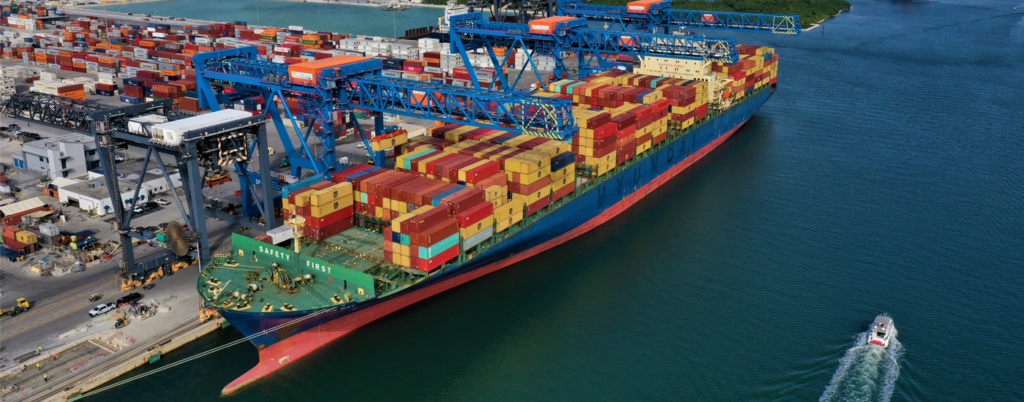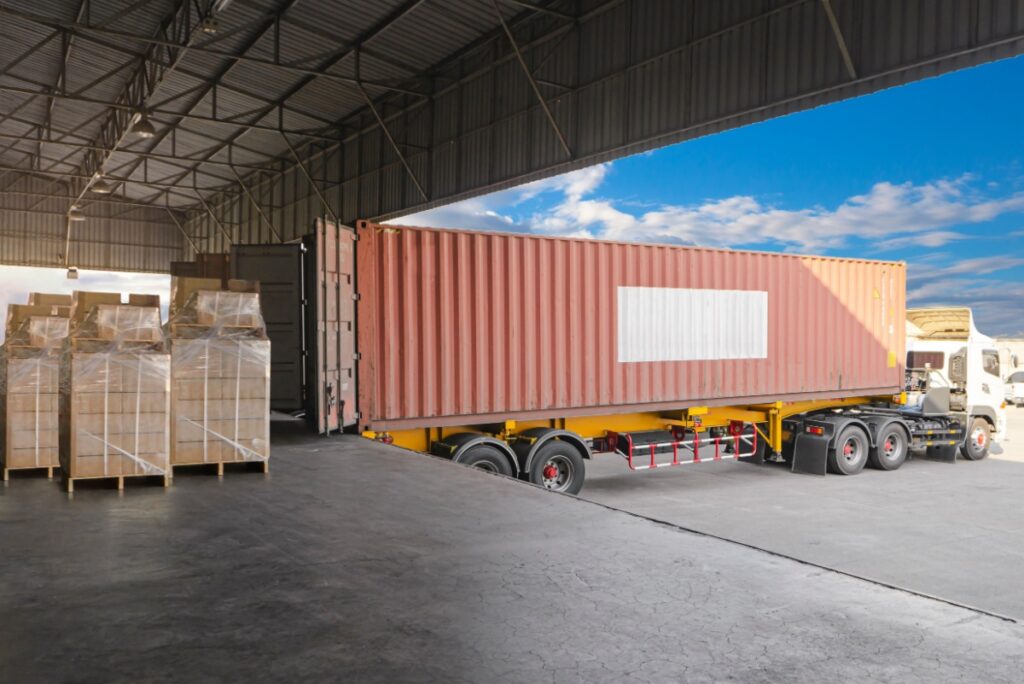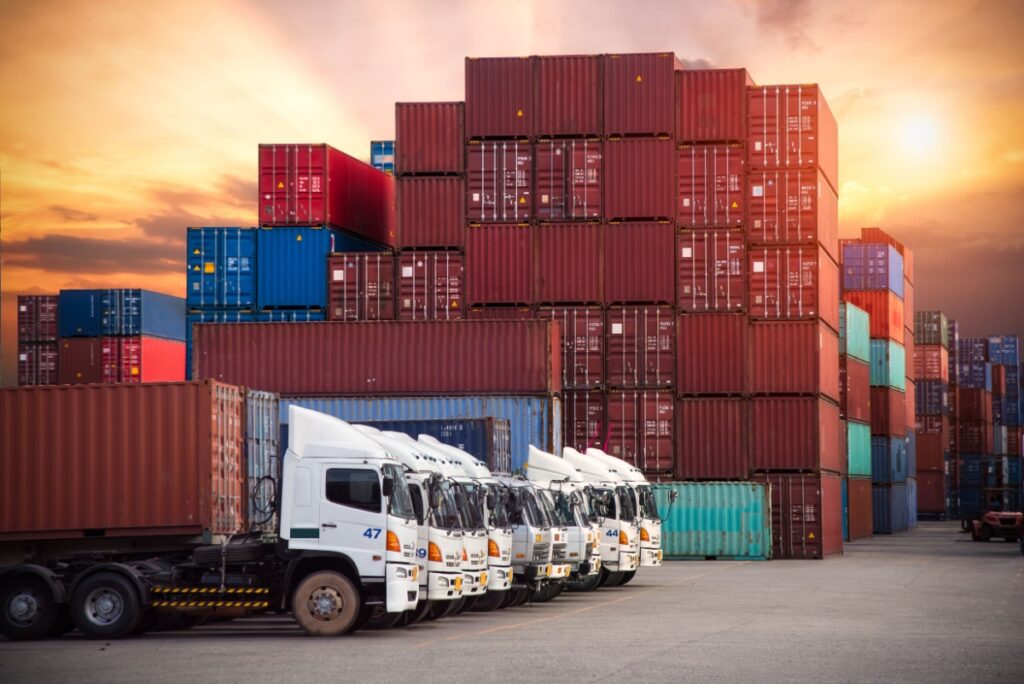What is Transloading in Logistics and Why It’s Crucial for Your Supply-chain?
Given the rapid increases in international trade, transloading has become a standard method for businesses that are involved in moving goods across borders. This has become increasingly important as more businesses seek out global markets to distribute their products and expand their business operations beyond their home country. The Bureau of Transportation found that 41.8% of all freight transport involved transloading tactics, mainly in the form of two or more transport modes for shipping cargo.
What is Transloading in Logistics?
Transloading refers to the process where different modes of transportation are utilized in transferring goods, which occurs within a specific transloading facility like a warehouse or distribution center. Transloading is most commonly utilized in intermodal logistics or a type of logistics process where multiple modes of transport are used for moving shipments such as trucks, railcars, ships, or aircraft.
An example of transloading would be the arrival of a shipment of electronics at a seaport, after which a drayage provider would transport the container to a nearby transloading warehouse. At the transloading warehouse, the goods are stored temporarily before they are loaded onto trucks to be delivered to the respective retail stores. This seamless transfer of goods from an inbound vehicle to an outbound trucking helps optimize the supply chain while leading to reduced costs and faster delivery times.

How Does Transloading Improve Intermodal Shipping?
Now that you know what is transloading in logistics is, let’s discuss its role in intermodal shipping. With a wide variety of options, a rising trend is for companies to outsource shipping to third-party drayage services. These companies are responsible for overseeing the movement of goods from the supplier or source to the customer by deciding what combination of transport modes would yield the best routes for the delivery process.
The high demand for transloading can be traced to the fact that most freight transport is carried out in steel rectangular containers with a length of either 20 or 40 feet. These containers have been purpose-built to be intermodal so that they can be easily transferred from one transport mode to another, such as trucks to rail cars and then ships. The process could be reversed if necessary, which makes transloading the preferred logistics method for delivering goods internationally.
Benefits of Transloading Services in Freight Shipping
Businesses can benefit from utilizing multiple modes of transportation to transfer goods during their journey.
1. Cost Savings
Since transloading makes use of multiple transport modes, businesses can select optimal shipping routes that reduce overall transportation expenses. Each mode of transport comes with specific benefits such for example, rail transport is more cost-effective for long-distance shipping, while trucks are conducive for shorter routes.
2. Optimize Shipping Routes
Transloading makes it possible for businesses to choose shipping methods that would be most efficient in terms of traveling distance and market condition while ensuring that goods are delivered within set timelines. This flexibility is invaluable for companies that intend to adapt quickly to changes in the logistics environment and avoid costly delays.
3. Expedited Delivery Times
When a transloading facility is located at the right destination, transit times are considerably reduced as goods can be quickly transferred and dispatched to their end destinations. A higher shipping speed is particularly favorable for time-sensitive shipments requiring urgent deliveries, such as for medical supplies, machinery, or electronics.
4. Sustainable Supply Chains
Transloading is also a sustainable method as it helps reduce both travelling time and distance. With transloading, multiple shipments can be consolidated into a single shipment so that less fuel is consumed, which cuts down carbon emissions. For example, when freight is shifted from trucks to trains through transloading, carbon emissions are significantly reduced since trains are 500% more fuel-efficient than trucks. 
Types of Transloading Facilities
Different types of transloading facilities require specific modes of transport depending on the freight type. Common facilities include:
- Rail Yards
These transfer goods between trucks and railcars.
- Ports
At ports, containers carrying goods are offloaded from incoming ships and loaded onto trucks or trains.
- Distribution Centers
In these centres, goods are assembled into shipments and redirected to their consolidated and redirected goods to their next destination.
- Freight Terminals
These locations serve as distribution points where goods and cargo are transferred between different modes of transportation.
Strategies to Optimize Freight Costs through Transloading
If you intend to accrue maximum costs, the following transloading strategies would be the most helpful.
-
Consolidation
This involves combining smaller shipments to take advantage of bulk pricing. For example, you can share truck or rail space with other shippers, which will allow you to divide transportation costs, hence adding to the financial stability of your supply chains.
-
Technology in transloading warehouses
Integrate transloading software into your operations for greater visibility into your processes and assets like railcars, shipments, and warehouse inventory. This will help you manage your cargo in real time while getting rid of the errors and delays involved in manual processes.

Types of Material Transported via Transloading
Transloading services attend to cargo carrying various types of products including;
1. Bulk Commodities
This includes grains, minerals, and sand, which are transferred via conveyors or loaders from railcars to trucks.
2. Liquids
This category consists of food-grade liquids, fuels, and chemicals that have to be moved between tankers and trucks under strict safety protocols.
3. Intermodal Freight
Freight comprises shipping containers carrying perishables as well as electronics and auto parts. In this case, transloading occurs between rail and truck, or cargo is transferred from drayage carriers to delivery providers.
4. Temperature-Sensitive Goods
Frozen foods and pharmaceuticals that mandate strict delivery timeframes are transferred using air-conditioned or refrigerated containers to maintain optimal temperatures.
Conclusion
Transloading can have a transformative impact on your logistics strategy by offering an efficient way to transport goods with reduced shipping costs. Incorporating transloading services into your logistic strategy can bring more value to your business performance and enhance your supply chain performance.
If you are looking for reliable transloading companies, contact us to improve your logistics and help build reliable, efficient supply chains. At Accurate Trailers, we will help you craft a solid logistics plan to ensure your cargo receives the best of rail and over-the-road transportation to fuel your growth in international commerce.
FAQ’s
1. What is the definition of transloading?
Transloading definition refers to the process of transferring goods across different modes of transport en route.
2. How does transloading differ from cross-docking?
Transloading meaning differs from cross-loading in that it relies on temporary storage as cargo is transferred from one carrier to another, whereas cross docking involves immediate transfer between transport modes.
3. What types of businesses benefit from transloading services?
Businesses that trade high volumes of goods or depend on multiple modes of transport, such as Retailers, manufacturers, and distributors, all benefit from transloading services.
4. How can I find transloading services near me?
You can search for transloading services near me through logistics directories, or you can look for online service providers.